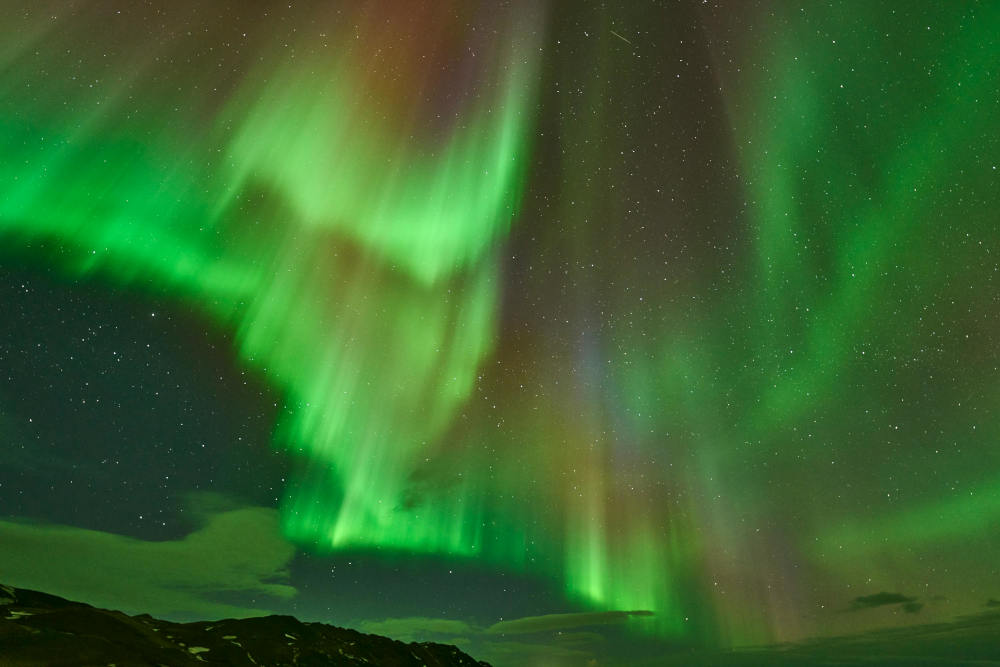
Human curiosity has always driven us to ask big questions: Where did we come from? How big is the universe? Is there more out there? As science and philosophy evolve, so do the concepts we use to explain reality. From the universe we live in to the theoretical multiverse and the all-encompassing omniverse, each level challenges our understanding of existence itself.
In this article, we'll explore the differences and relationships between the universe, multiverse, and omniverse — what they mean, how they’ve developed, and what they might reveal about our place in the cosmos.
Panaprium est indépendant et pris en charge par les lecteurs. Si vous achetez quelque chose via notre lien, nous pouvons gagner une commission. Si vous le pouvez, veuillez nous soutenir sur une base mensuelle. La mise en place prend moins d'une minute et vous aurez un impact important chaque mois. Merci!
1. The Universe: Our Observable Reality
What Is the Universe?
The universe is everything we can observe and measure — all of space, time, energy, matter, and the physical laws that govern them. It includes:
-
Galaxies and stars
-
Planets and moons
-
Black holes and dark matter
-
Radiation and fundamental forces
In simple terms, the universe is the totality of existence that science can currently detect or theorize within our observable limits.
Size and Scale
The observable universe has a radius of about 46.5 billion light-years, which means light from the farthest objects has taken that long to reach us. In total, it's roughly 93 billion light-years across, and possibly far larger beyond what we can see.
It contains:
-
Over 2 trillion galaxies
-
An estimated 1 septillion stars (1 followed by 24 zeros)
-
Possibly countless planets, including Earth
Despite its immensity, the universe is bound by physical laws like gravity, relativity, and quantum mechanics.
2. The Multiverse: A Collection of Universes
What Is the Multiverse?
The multiverse is a hypothetical structure composed of multiple, possibly infinite universes, each with its own version of space, time, and laws of physics. While our universe is just one, the multiverse contains many — some very similar, others radically different.
Origins of the Idea
The concept of a multiverse has roots in several branches of science:
-
Quantum Mechanics (Many-Worlds Interpretation): Suggests that every quantum decision splits reality into different outcomes, each in its own universe.
-
Cosmic Inflation Theory: Proposes that during the Big Bang, rapid expansion created “bubble universes” that drift apart and evolve independently.
-
String Theory / M-Theory: Describes 11-dimensional "branes" (membranes) where each brane could be its own universe.
Types of Multiverses (As Proposed by Max Tegmark)
-
Level I – Infinite space with regions that repeat (basic expansion).
-
Level II – Universes with different physical constants (cosmic inflation).
-
Level III – Parallel universes from quantum splits (many-worlds).
-
Level IV – Universes governed by different mathematical laws.
Scientific Status
Although the multiverse is a theoretical construct, some evidence from cosmology and quantum theory suggests it could be real. However, we currently lack direct observational proof, making it a topic of ongoing debate.
3. The Omniverse: The All-Inclusive Totality
What Is the Omniverse?
The omniverse is the highest-level conceptual framework — the sum of all universes, multiverses, dimensions, timelines, and realities, including those beyond physical laws or human understanding.
In essence, the omniverse is:
-
The totality of everything that exists, could exist, or has ever existed
-
Inclusive of all forms of reality — physical, spiritual, simulated, and abstract
-
Beyond even the most advanced theories in modern physics
It’s a term that attempts to account for not just scientific possibilities but also metaphysical and philosophical ones.
Where Does the Idea Come From?
The term "omniverse" is used more in metaphysical discussions, science fiction, and speculative philosophy than in mainstream science. However, it's useful for exploring the idea that even the multiverse could be just one layer of a greater whole.
In this model:
-
The universe is a single reality.
-
The multiverse is a collection of many universes.
-
The omniverse is the set of all possible multiverses and all other possible states of existence.
Including Non-Physical Realities
The omniverse may also include:
-
Simulated realities (like those in The Matrix)
-
Spiritual or divine planes
-
Abstract mathematical structures
-
Higher-dimensional realms
It’s an infinite set, constantly expanding to include all that can be conceived, imagined, or manifested.
Comparing the Three: Universe vs. Multiverse vs. Omniverse
| Concept | Definition | Contains | Scientific Basis | Common in |
|---|---|---|---|---|
| Universe | All known space, time, matter, and energy | Stars, galaxies, planets | Well-established (observational cosmology) | Science |
| Multiverse | Hypothetical set of multiple universes | Many universes with varying laws | Theoretical (quantum physics, inflation theory) | Science + Sci-Fi |
| Omniverse | All universes, multiverses, dimensions, and realities | Everything that exists or could exist | Speculative, philosophical | Metaphysics, Fiction |
Why These Concepts Matter
1. Expanding Human Understanding
As we uncover more about space and time, our view of reality grows. Once, Earth was the center of the cosmos. Now, we know it’s a tiny dot in a vast universe — possibly one of countless others.
Thinking in terms of the multiverse and omniverse pushes the boundaries of knowledge and opens doors to new ways of thinking.
2. Fueling Scientific Innovation
Even if the multiverse or omniverse isn’t directly testable yet, these ideas inspire:
-
Cosmological models
-
New interpretations of quantum theory
-
Advanced mathematics and simulation theory
-
Hypotheses about dark matter, entropy, and the origins of the universe
3. Deepening Philosophical and Spiritual Inquiry
Many ancient spiritual systems already speak of multiple planes of existence, alternate realms, or divine realities. The omniverse, in this sense, aligns with ideas like:
-
The Source or Divine Mind beyond time
-
Higher planes of consciousness
-
The holographic nature of reality
Such ideas also overlap with simulation theory and consciousness studies — suggesting that reality might be deeper and more layered than what we see.
Popular Culture and the Omniverse
Modern media frequently explores these concepts:
-
Marvel Comics and DC Comics use multiverse and omniverse models to explain alternate versions of characters and worlds.
-
Rick and Morty portrays an infinite number of parallel realities.
-
Everything Everywhere All At Once dives into personal identity across multiversal timelines.
-
Doctor Strange explores multiverse travel and its consequences.
Fiction gives us a sandbox to experiment with reality-bending ideas and imagine the unimaginable.
Criticisms and Controversies
1. Lack of Empirical Evidence
One major criticism of both the multiverse and omniverse is the lack of direct evidence. Some scientists argue these concepts are unfalsifiable — meaning they can’t be proven or disproven, which challenges their scientific validity.
2. Philosophical Concerns
Others worry that these ideas complicate our understanding of reality. If everything that can happen does happen somewhere, what does that say about free will, morality, or personal responsibility?
Final Thoughts: Our Place in the Cosmic Hierarchy
When comparing the universe, multiverse, and omniverse, we’re really talking about nested layers of reality:
-
The universe is our home — vast, beautiful, and mysterious.
-
The multiverse suggests we’re just one universe among many.
-
The omniverse proposes that all possibilities, realities, and dimensions exist simultaneously in a grand, infinite totality.
These frameworks may sound abstract or even overwhelming. But they also remind us of something profound: reality is far bigger, more mysterious, and more interconnected than we can fully grasp.
And yet, here we are — conscious, curious beings — able to ask these questions and search for answers. In that search, we might not only discover more about the cosmos, but also more about ourselves.
Cet article vous a-t-il été utile ? S'il vous plaît dites-nous ce que vous avez aimé ou n'avez pas aimé dans les commentaires ci-dessous.
About the Author: Alex Assoune
Contre Quoi Nous Luttons
Les groupes multinationaux surproduisent des produits bon marché dans les pays les plus pauvres.
Des usines de production où les conditions s’apparentent à celles d’ateliers clandestins et qui sous-payent les travailleurs.
Des conglomérats médiatiques faisant la promotion de produits non éthiques et non durables.
De mauvais acteurs encourageant la surconsommation par un comportement inconscient.
- - - -
Heureusement, nous avons nos supporters, dont vous.
Panaprium est financé par des lecteurs comme vous qui souhaitent nous rejoindre dans notre mission visant à rendre le monde entièrement respectueux de l'environnement.
Si vous le pouvez, veuillez nous soutenir sur une base mensuelle. Cela prend moins d'une minute et vous aurez un impact important chaque mois. Merci.































0 commentaires